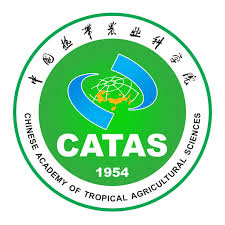| Title | The genome draft of coconut (Cocos nucifera). |
| Publication Type | Journal Article |
| Year of Publication | 2017 |
| Authors | Xiao Y, Xu P, Fan H, Baudouin L, Xia W, Bocs S, Xu J, Li Q, Guo A, Zhou L, Li J, Wu Y, Ma Z, Armero A, Issali AEmmanuel, Liu N, Peng M, Yang Y |
| Journal | Gigascience |
| Volume | 6 |
| Issue | 11 |
| Pagination | 1-11 |
| Date Published | 2017 11 01 |
| ISSN | 2047-217X |
| Keywords | Cocos, Genome, Plant, Molecular Sequence Annotation |
| Abstract | Coconut palm (Cocos nucifera,2n = 32), a member of genus Cocos and family Arecaceae (Palmaceae), is an important tropical fruit and oil crop. Currently, coconut palm is cultivated in 93 countries, including Central and South America, East and West Africa, Southeast Asia and the Pacific Islands, with a total growth area of more than 12 million hectares [1]. Coconut palm is generally classified into 2 main categories: "Tall" (flowering 8-10 years after planting) and "Dwarf" (flowering 4-6 years after planting), based on morphological characteristics and breeding habits. This Palmae species has a long growth period before reproductive years, which hinders conventional breeding progress. In spite of initial successes, improvements made by conventional breeding have been very slow. In the present study, we obtained de novo sequences of the Cocos nucifera genome: a major genomic resource that could be used to facilitate molecular breeding in Cocos nucifera and accelerate the breeding process in this important crop. A total of 419.67 gigabases (Gb) of raw reads were generated by the Illumina HiSeq 2000 platform using a series of paired-end and mate-pair libraries, covering the predicted Cocos nucifera genome length (2.42 Gb, variety "Hainan Tall") to an estimated ×173.32 read depth. A total scaffold length of 2.20 Gb was generated (N50 = 418 Kb), representing 90.91% of the genome. The coconut genome was predicted to harbor 28 039 protein-coding genes, which is less than in Phoenix dactylifera (PDK30: 28 889), Phoenix dactylifera (DPV01: 41 660), and Elaeis guineensis (EG5: 34 802). BUSCO evaluation demonstrated that the obtained scaffold sequences covered 90.8% of the coconut genome and that the genome annotation was 74.1% complete. Genome annotation results revealed that 72.75% of the coconut genome consisted of transposable elements, of which long-terminal repeat retrotransposons elements (LTRs) accounted for the largest proportion (92.23%). Comparative analysis of the antiporter gene family and ion channel gene families between C. nucifera and Arabidopsis thaliana indicated that significant gene expansion may have occurred in the coconut involving Na+/H+ antiporter, carnitine/acylcarnitine translocase, potassium-dependent sodium-calcium exchanger, and potassium channel genes. Despite its agronomic importance, C. nucifera is still under-studied. In this report, we present a draft genome of C. nucifera and provide genomic information that will facilitate future functional genomics and molecular-assisted breeding in this crop species. |
| DOI | 10.1093/gigascience/gix095 |
| Alternate Journal | Gigascience |
| PubMed ID | 29048487 |
| PubMed Central ID | PMC5714197 |
- Log in or register to post comments
- Google Scholar
- PubMed




